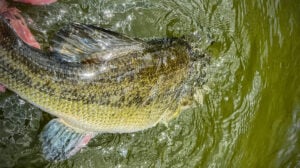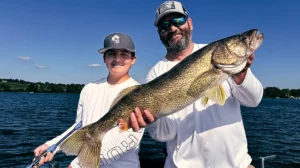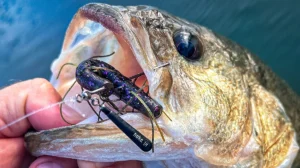We get asked all the time about fishing electronics and what is best and which one should I buy. To say they are overwhelming to most folks would be an understatement and that is very understandable. It’s very much like buying a computer and it really comes down to what it will be used for. Down Scan, Down Imaging, Side Scan, Side Imaging, Down Vu, Side Vu, pixels, GPS, offsets, CHIRP, kilohertz, radar, megahertz and waypoints and you get confused. Come on man! It is not rocket science, or is it. Let’s take a quick look.
There are 4 main players in freshwater fishing for Marine Electronics:
- Humminbird
- Lowrance
- Garmin
- Raymarine
Most have the same features as the other with their own creative spin. All have units with and without GPS. All have units with mapping and units without it. All of them offer down and side imaging variations, so it can be a quandary for all anglers even if budget is not an issue.
Being able to decide on the best unit for you takes some research but ultimately comes down to the type of fishing you do. If you are a shallow water angler you usually just want to know the depth and maybe bottom composition. If you are a deep water angler you will want high definition and the ability to look both downward and to the side as well as GPS and mapping. Being able to see fish positioned on structure is a key element here. No more triangulation with a good GPS/mapping combo unit either.
Humminbird
Humminbird calls their downward enhanced viewing Down Imaging and side view capability Side Imaging and they were the first to release side imaging technologies. Down Imaging emits a wide downward beam from the transducer and Side Imaging is a very narrow beam that allows the user to scan to the right and the left.
They introduced a new technology two years ago called 360 Imaging that allows the user to view the water column in 360 degrees. The beauty of this add-on is it allows for a very accurate 360 degree view on the bottom and increases the effectiveness of cast angles and finding cover before you drive over it with your boat. Combined with data chips LakeMaster, they have synchronous interleaving of great screens and 1 foot increment contour mapping.
Lowrance
Lowrance started with the “Little Green Box” depth finder and has evolved to enhanced mapping, Spotlight Scan, Down Scan and Side Scan with screen sizes up to 12 inches. Being able to dissect the bottom has become old hat and finding grandpa’s secret stump is now on everyone’s waypoint list. Picture clarity is greatly enhanced with Elite CHIRP transducers, that provide multi-frequency, low-power pinging, which removes the clutter and map the structure and the fish more clearly.
Lowrance combines Navionics mapping capability with most units for stellar mapping of most lakes and inland waters. They also offer an Insight Genesis program for creating your own detailed maps of areas or lakes that may not currently offer maps on any platform. Networking to your boat’s engine can be accomplished with the NMEA 2000 interface.
Garmin
By the way CHIRP was developed by Airmar who builds transducers. Extreme resolution and removal of clutter is the benefit. Garmin was the first company to include multi-frequency CHIRP technology and created the first “head” that was CHIRP capable. Just about every manufacturer has it now, and most work with Airmar to make sure their units work most effectively. Units equipped with CHIRP have noticeably clearer top range and a much cleaner bottom image.
Garmin has been a leader in saltwater electronics, avionics, recreation, cameras and GPS technology market for years, and just jumped back in the fray with their new line-up of freshwater gear that compliments long time offerings they developed for saltwater and offshore fishing in High-Def quality.
Their reputation has been to never bring unproven technology to the market and looking at their new gear its evident that are “spot on” with picture quality and functionality. Incorporating great features like better screen technology and clear picture capability for regular sonar to down and side views makes for near photo quality images. Adding something simple like a “Home” key to their screen displays is huge in my book and shows the attention to detail in their research and development.
The units are very streamline and hook-ups are modular and easily networked. With over 17,000 maps and more being developed and mapped by Garmin most lakes are included for topography. Networking of their GPSMAP XS units is simple with their black box called a GCV10.
Raymarine
Raymarine, long a saltwater go-to system, has entered the freshwater market in a big way utilizing an “Icon” based interface technology and touch screen like ease of use. Raymarine’s lighthouse joystick controlled screens are clean and concise and allow the angler to move around the software and features of it flawlessly.
Their c Series combines widescreen LCD formatting with backlit LED technology for super bright and clear images while using less power. Glare and reflection is minimized with their screens. Long time saltwater icons they have entered the freshwater market with both feet. They have CHIRP DownVision in their portfolio now and rumor has it they have a side view capability that will be available very soon too. Their DragonFly units come in displays of 5.7 and 7 inch sizes and have mapping/GPS and DownVision. Their c Series displays come in 9 and 12.1-inch displays and include all of the icon based technology. Raymarine also allows users to interface to their engine combined in the unit or by buying a separate piece of gear called a ECI-100 Universal Engine and Control Interface.
Conclusions
Each of the aforementioned companies have units with some superb features and functionality at the lower price levels too. Most are easily upgradable at minimal or no cost and determining which unit is best suited for you is based on budget and type of fishing. Shallow water anglers who fish shoreline cover can save some money with lesser priced units. Typically screen size is a differentiator when price shopping but most anglers can find the best unit for their type of fishing and budget by digging around.
A good general rule of thumb is buy the best unit you can for the budget. That may sound simple but more expensive, more functionality may not be the best choice for all anglers as your type of fishing may not need all of it. The beauty of our electronics technology today is there is a unit and a price point that affords every angler a chance to get what suits them best. Do your homework, look for promotions and sales and good luck choosing your next piece of electronics gear.
We provide individual product reviews of many of the electronics gear mentioned here on Wired2fish and will be reviewing more in the future.







![[VIDEO] How to Install the Garmin Force Pro Trolling Motor](https://www.wired2fish.com/wp-content/uploads/2025/06/trolling-motor-install-300x169.webp)











